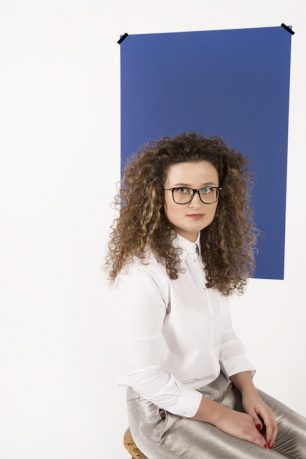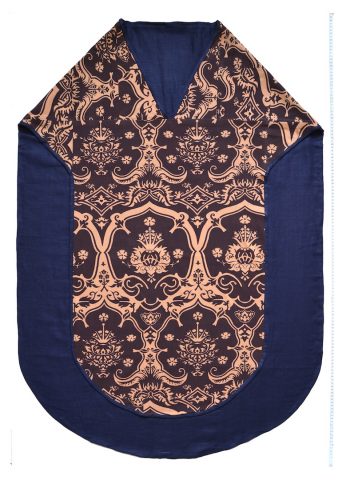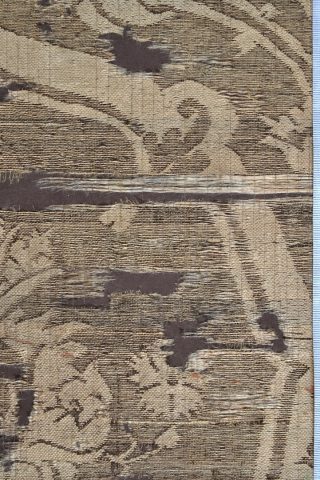Conservation of the chasuble from the first half of the fifteenth century from the National Museum in Gdańsk. Considerations on the scope of conservation and restoration works
The chasuble made it to the present day in a deteriorated state. Taking a restorative action was necessary to save the antique. Conservation of the chasuble represented a major challenge, an extremely tedious and time consuming one. Awareness of saving a medieval relic from complete destruction and preserving it for future generations has been a source of great satisfaction. The conservation work has been enriched with development of a model chasuble, recreating its cut, setup, and original colours of silk lining.
In theoretical part of my degree piece I made a copy of the printed pattern of a medieval stole from the National Museum in Gdańsk. I have continued my conservation project executed in the course of studies, then including a detailed analysis in terms of technology and technique. The idea to recreate the pattern of the fabric in accordance with the original resulted from change of its original appearance and fragmented preservation of motifs printed using paint and gold leaves. Mastering the technique of manual woodblock printing required a series of tests and experiments – in theory the printing technique seems very simple, but in fact it is a complex process dependent on many factors. Both parts of my degree piece were executed under the research programme The treasure of medieval paraments from Gdańsk funded by the National Science Centre (No. 2013/09/B/HS2/01197), implemented by the Chair of Conservation and Restoration of Historic Textiles of the Academy of Fine Arts in Warsaw.

(born 1989)
Studied at the Faculty of Conservation and Restoration of Works of Art at the Academy of Fine Arts in Warsaw in the years 2009–2016. Rector’s scholarship for the best students of the Academy in the academic years 2011/12, 2012/13, 2013/14. She works in conservation of historical textiles and experimental textiles.






